Spencer Stadium: Banbury United
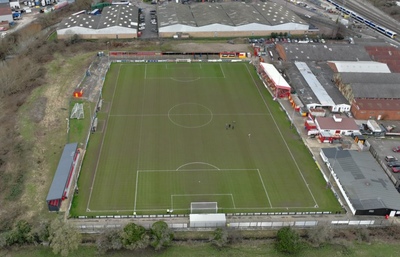
From Banbury United
Currently known as the Banbury Plant Hire Community Stadium because of a sponsorship agreement, Spencer Stadium has been the home of Banbury United since the start of the 1934-1935 campaign. As you can imagine, there have been numerous changes to the ground since then, such as in 1966 when the club joined the Southern League and floodlights were installed alongside the building of a new clubhouse. Previously the club had used railway carriages as their changing rooms. In 1990, after years of deterioration, the Main Stand was demolished and a new stand wasn’t built in its place until the turn of the millennium.
If you’re wondering where the name ‘Spencer Stadium’ comes from, it’s nothing to do with Made in Chelsea, instead being an homage to the fact that the football club was initially known as Spencer Sports Club, being a work’s team for the Spencer Corsets factory that operated in the local area. Initially playing friendly matches, they joined the Oxfordshire Junior League in 1933, two years after the club’s formation. At that point the side was renamed as Spencer Villa, then Banbury Spencer, winning the title at the first time of asking. The Banbury United name didn’t come about until 1965 after new ownership came in.
Stats
| Spencer Stadium Stats | |
|---|---|
| Year Opened | 1934 |
| Capacity | 6500 |
| Average Attendance | 618 |
| Record Attendance | 7160 (Banbury United v Oxford City (30/10/1948)) |
| Pitch Size | 105 x 65 (6825) |
| Owner | Banbury United FC |
| Sponsor | Banbury Plant Hire |
| Clubs Hosted | Banbury United |
| Banbury United Stats | |
|---|---|
| Year Founded | 1931 |
| Nickname | The Puritans |
| Club Mascot | Spencer the Puritan |
| Rivals | Brackley Town |
| Previous Stadiums | Middleton Road |
| Kit | Red with Yellow (Home) / White with Black (Away) |
| Training Ground | Banbury Town YFC |
| Shirt Sponsor | Banbury Skip Hire (Home) Walraven (Away) |
| Team Owner | Banbury Community Benefit Society |
| Record Goalscorer | Dick Pike / Tony Jacques (222) |
| Record Appearances | Jody McKay (576) |
Spencer Stadium Photos
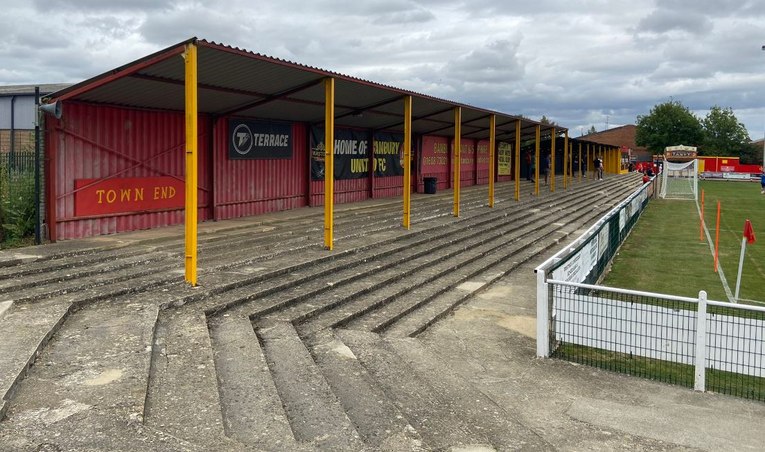
Spencer Stadium, Terraces at the Town End
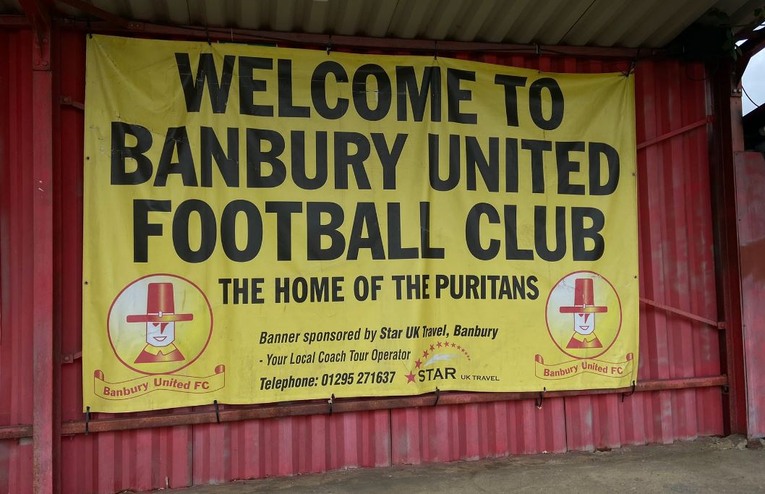
Spencer Stadium, Welcome Sign
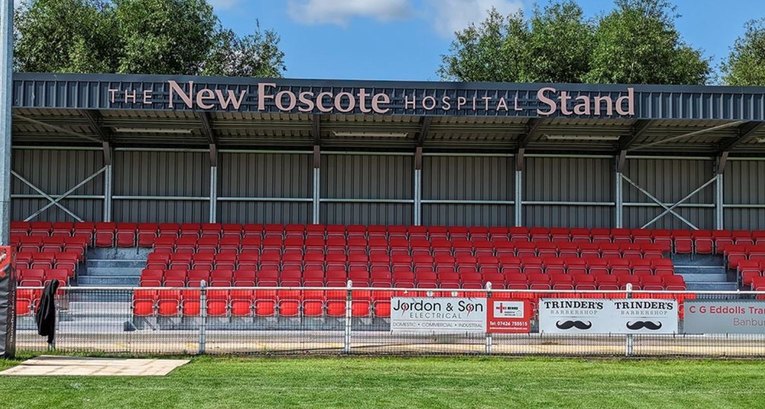
Spencer Stadium Seating Plan and Where to Sit
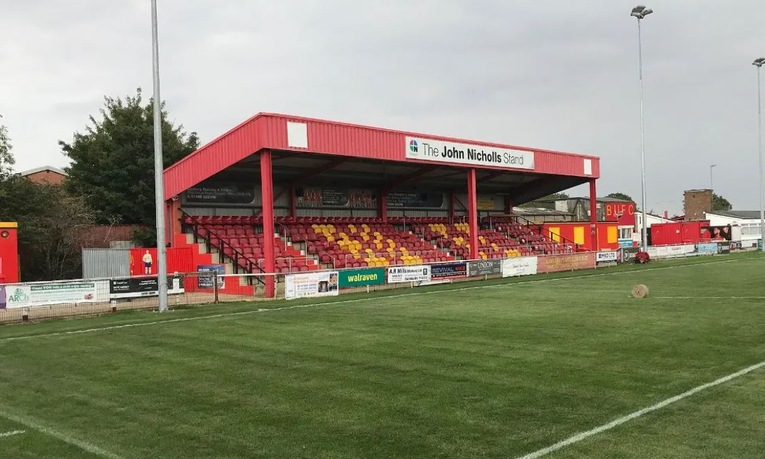
The majority of Spencer Stadium is made up of terraces, entirely open to the elements and therefore not a fun place to be located when the weather isn’t sunny or dry. There is one terrace behind one of the goals that is covered, as well as the Main Stand that is the only part of the stadium that offers seating. Even that isn’t the biggest thing, instead taking up about a third of one side of the edge of the pitch.
Banbury United Ticket Prices
Ahead of the 2023-2024 season, Banbury United announced that they would be keeping the ticket prices the same as they had been the previous year. That offers you some guide of the sort of prices you can be expected to pay, with the following being what they were for that campaign:
- Adult – £15
- Concession – £11
- Student – £8
- Under 18 – £5
- Under 11 – £2
The club also has initiatives such as Family Season Tickets, with each local primary school issued one for the season for use amongst the school community. Obviously not much use to those of you not living in the local area, but still a nice thing that is worth mentioning.
How To Get Banbury United Tickets
Lower league clubs are acutely aware of the fact that they’re competing against the likes of the Premier League, Champions League and other competitions for your attention. As a result, the likes of Banbury United work hard to ensure that their websites are as good as they can be, meaning that it’s the first place that you should head to if you want to but a ticket. If you’d rather, though, you can buy them on the turnstiles on the day of the match.
Where to Buy
Getting To Spencer Stadium
Train – Banbury United’s home ground is remarkably close to Banbury Railway Station, meaning that it is just a short walk between the two locations. The station itself is run by Chiltern Railways, so trains are reasonably easy to get from the surrounding area.
Bus – For those of you that like to get the bus to your destination, it is the B3 that stops quite close to the football ground and is therefore the one to look out for.
Car – The only access open to the ground is via the Railway Station Approach. You can get there by leaving the M40 at Junction 11 and getting onto the A361 or A422. From there you will need to follow the signs into Banbury and then look out for signs to the town centre and then to Banbury Railway Station.
By Air – The location of Banbury essentially midway between London and Birmingham means that you’re almost spoilt for choice about how to get there if you’re flying into the country for a match. Birmingham International is the closest airport, taking less than an hour to get between the two locations. It will take you a lot longer to get from the likes of London Heathrow or Gatwick, but you might find the options are more plentiful.
Taxi – The ground is close enough to the train station to mean that most people won’t want to get a taxi, but for some it is unavoidable. If you fit into that category then you’d be unlucky if you were asked to pay more than £5 for the pleasure.
Parking Near Spencer Stadium
Anyone driving to see a Banbury United match will obviously need somewhere to leave their car, with the good news being that there is a spectator car park at the ground itself. The bad news is that it is quite small and works on a first-come-first-served basis. There is the option to park in Banbury Railway Station’s car park for a relatively small fee, with other car parks available around the town itself. There is street parking, of course, but you need to be mindful of any restrictions that are in place.
Useful Resources
- Parking - Just Park
Pubs and Bars Near Spencer Stadium
Danny's Sports Bar & Grill
The Dog & Gun
The Cherwell
About Banbury United
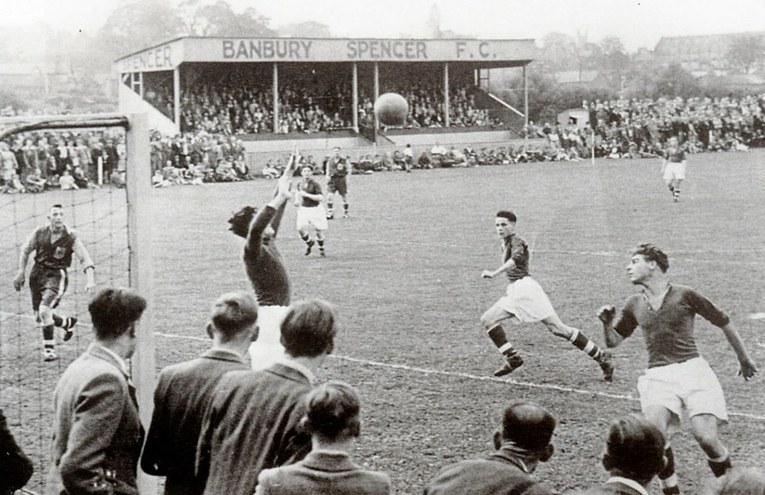
Founded in 1931 as a work’s team for Spencer Corsets factory, Spencer Sport Club, as it was known then, played their first match on the 29th of August 1931 when they lost 8-2 against St John’s. That might have been a reason to be discouraged for some, but the players kept going and in 1933 joined the Banbury division of the Oxfordshire Junior League, taking on a new moniker of Spencer Villa. That didn’t last long, presumably because someone realised it sounded a bit like a Hollywood matinee idol, becoming Banbury Spencer instead. After winning the Oxfordshire Senior League in 1935, the club was elected to the Birmingham Combination.
As you can imagine, there have been a number of ups and downs over the years, with the side turning professional in the wake of the Second World War. A change of ownership in 1965 led to another change of name, this time to Banbury United, which they have remained as ever since. There have been a number of relative successes over the years, such as becoming Southern League Premier Division Central champions in 2022, winning the Hellenic League Premier Division in 2000 and enjoying victories in the Oxfordshire Senior Cup and the Buckingham Charity Cup numerous times. They have also reached the first round of the FA Cup on several occasions.
Spencer Stadium History
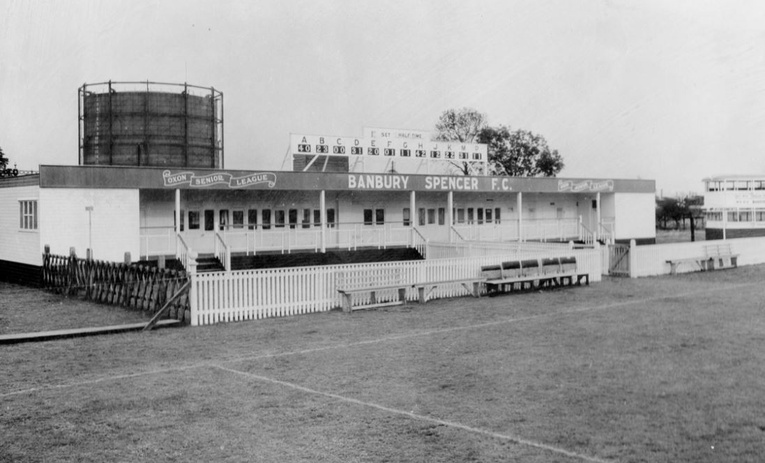
In spite of the fact that the stadium opened its doors to Banbury United in 1934, having been used regularly ever since, there isn’t a huge amount that we can tell you about it. The Main Stand at the stadium deteriorated significantly after financial problems led to mismanagement of the ground, meaning that it needed to be demolished in 1990. It took a decade before a new stand was built in its place, being put in situ towards one end of the pitch rather than on the halfway line. That Main Stand is the only part of the ground with seats, allowing around 250 people to sit down to watch a football match being played out.
The two ends of the ground have terracing, with a terraced section also on offer around half the length of the pitch opposite the Main Stand. In 2012, a new Flood Defence System was installed to protect the ground, as well as Banbury Railway Station and the housing that is located nearby. The facilities are best described as ‘basic’, but if the weather is good then it can be a decent place to watch football in the old-fashioned way. Floodlights were first installed in 1966 when the club joined the Southern League, which was also when the original Main Stand was built. That was designed to replace the railway carriages that had been used as changing rooms until that point.
